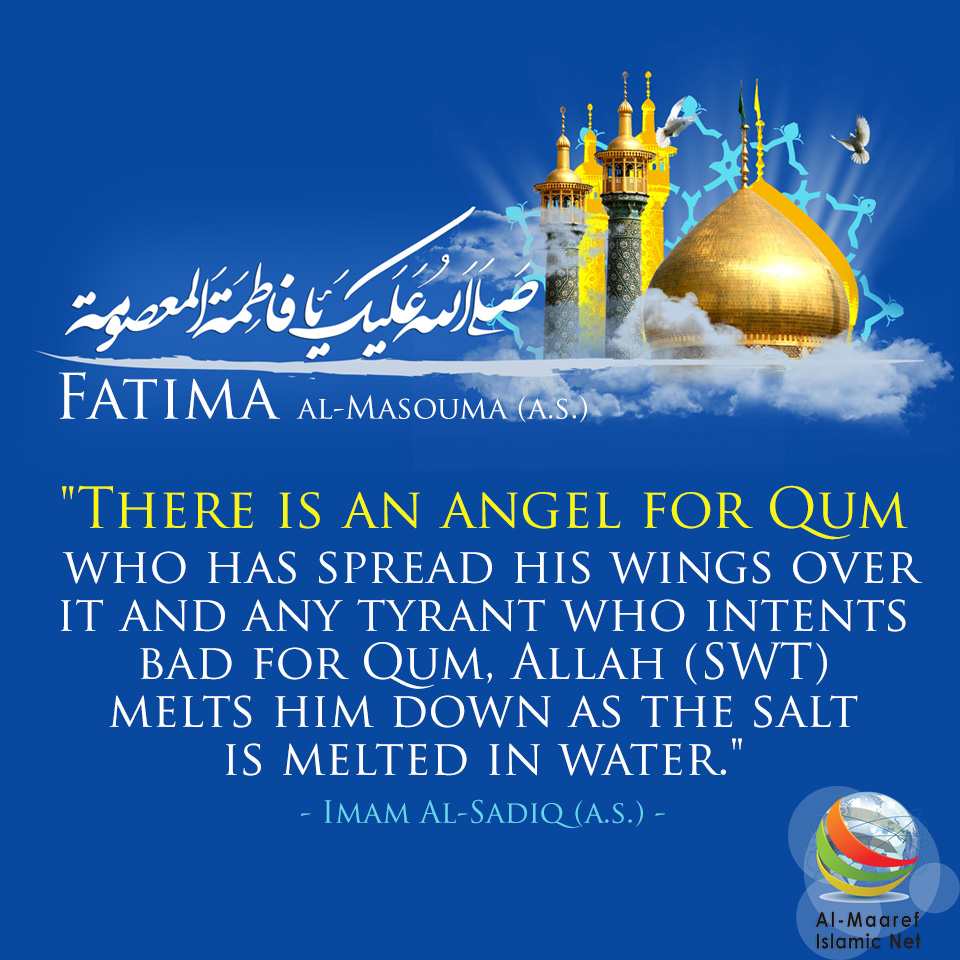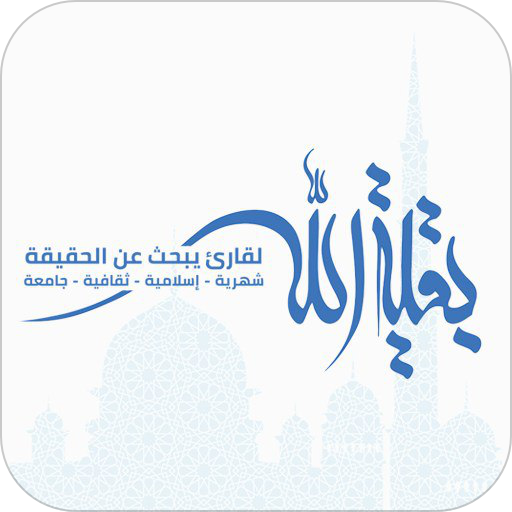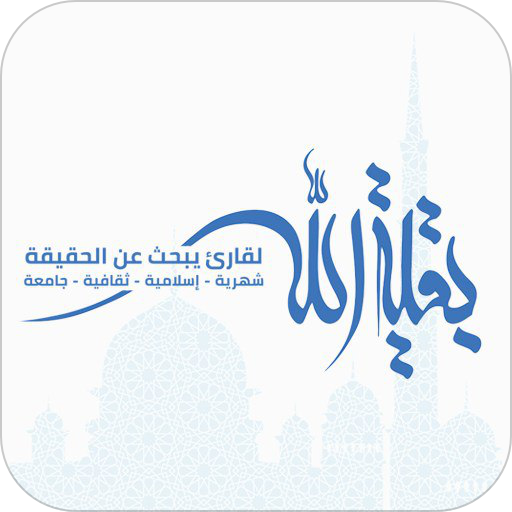When Hadrat Fatima Masouma (AS) was buried in Qum there was a shade made of straw on the holy grave built by Musa bin Khajraj.
The first dome which was in the form of a tower, was built by Hadrat Zainab (AS), the daughter of Imam Muhammad Taqi al-Jawad (AS) in the middle of third century hijrah. Stone, bricks and stucco were used as construction material for this dome.
With the burial of the ladies from the Holy Ahlul Bayt (AS) beside the grave of Hadrat Fatima
Masouma (AS) during later period two other domes were constructed beside the already existing dome.
These three domes were existing till the year 447 A.H./1055 A.D., when during that year Mir Abul Fazl Iraqi, the minister of Tughril the Great, at the insistence of Shaykh Toosi (R.A.) constructed a big dome without a balcony or chamber, in the place of the three existing domes which totally covered all the graves of all the divine ladies buried in that place. This dome was decorated by colorful bricks and tiles.
In the year 925 A.H/1519 A.D.., this dome was decorated and renovated with glazed tiles by the orders of Shah Baigi Begum, the daughter of Shah Ismail Safavi. A towering balcony with two minarets was constructed in the Atiq courtyard.
In the year 1218 A.H./1803 A.D., Fath Ali Shah Qajar decorated the dome with golden tiles. In the year 2000 these golden tiles were removed from the dome to carry out the major repairs in the dome by the orders of the reverend custodian of the holy shrine Hadrat Ayatullah Masoodi Khomeini. After completing the major repairs in the dome the golden tiles are being once again fixed on the dome. This grand project's cost is more than 25 billions Iranian Rials.
The Holy Grave of Hadrat Masouma (SA)
In the year 605 A.H./1208 A.D., Ameer Muzaffar Ahmad bin Ismail, the doyen of the Aal Muzaffar family ordered the master craftsman Muhammad bin Abu Taher Qummi, to make variegated glazed tiles for the holy grave of Hadrat
Masouma (AS). After eight years of incessant endeavour the master craftsman completed constructing the beautiful tiles for the grave of Hadrat
Masouma (AS) and in the year 613 A.H./1216 A.D., it were fixed on the holy grave. In the year 1998, the holy grave have once again been decorated with glazed tiles and beautiful stones and the internal walls of the burial chamber were ornamented with beautiful green marble stones.
The Holy Zarih (Burial Chamber)
In the year 965 A.H./1557 A.D., Shah Tahmasab Safavi made a Zarih (burial chamber) made of bricks which were covered with seven-colours tiles with glazed epigraphs. On all the four sides of the zarih there were openings through which the holy grave was seen and the pilgrims poured their offerings through them.
After some years Shah Tahmasab Safavi ordered for the construction of a zarih made of white and clear iron which was fixed to the zarih made of bricks.
In the year 1230 A.H./1814 A.D., Fath Ali Shah Qajar covered that iron zarih with silver. This zarih was corroded with the lapse of time. Thus, in the year 1280 A.H./1863 A.D., a new zarih was made of silver from the existing zarih and the silver preserved in the treasury of the holy shrine and placed on the grave.
That zarih was renovated many times and in the year 1969, a new zarih which is considered as a masterpiece of Islamic art was placed on the grave and that zarih exists till now. In the year 2001, basic renovation and repairs on the present zarih were carried out.
The Balconies in the Holy Shrine
The Golden Balcony
The golden balcony along with its two smaller balconies were constructed in the year 925 A.H./1519 A.D., when the dome was renovated and the Atiq courtyard and its minarets were constructed. At the top of the balcony an epigraph in blue background can be found on its circumference and in this epigraph the glorious hadith "Those who die with the love of the Family of Muhammad (peace be upon him and his household), die like the martyrs" is inscribed in thulth script.
After this epigraph the balcony's two meters circumference is covered with intrinsic glazed tiles. After that, there is another epigraph on the circumference. Above it there is honeycomb network attached to the roof of the balcony which are covered with golden tiles.
There are two smaller balconies on its both sides and are covered with beautiful glazed tiles.
The Aineh (Mirror) Balcony
In the east of the holy shrine there is a big balcony and because of the mirror work carried out it has become known as the Aineh (Mirror) balcony. One meter of the wall from the floor is covered with marble stones and above it till the roof it is completely covered with intrinsic mirror work.
In the circumference of the balcony there is epigraph inscribed in thulth script on marble stones and the verse from the Holy Qur'an "Allah is the light of the heavens and the earth" is inscribed on it.
Between the balcony and the eastern porch of the holy shrine there is a small balcony which is completely covered with mirror work and on its entrance an inscription in Nastaliq script is engraved reading the holy hadith "Those who perform the ziyarah of Fatima (Masouma) in Qum will be granted heaven." This wonderful artistic complex is the distinguished work of the famous master craftsman of the Qajari period Ustad Hasan Memar Qummi. This complex was built simultaneously with the construction of the new courtyard by the orders of the Prime Minister of that period Mirza Ali Asghar Khan Atabeg.
The Minarets in the Holy Shrine
Atiq Courtyard's Minarets In the Atiq courtyard two minarets are located on the Golden (Tila) balcony. The surface of the minarets is covered by knotted tiles in zigzag form and the holy names Allah (SWT), Muhammad (peace be upon him and his household) and Ali (AS)' are inscribed in between these knotted tiles.
These minarets were built on the orders of Muhammad Husain Khan Shahsavan Shihab al-Mulk in the year 1285 A.H./1868 A.D., and its domes were covered with golden tiles in 1301 A.H./1883 A.D.
The Minarets of the Mirror Balcony
On both the sides of the bases of the balcony two minarets are located which are considered as the highest building in the holy shrine.
At the top of the minarets there are two inscriptions written on an epigraphs with a breadth of one meters. Both these minarets are fully covered by knotted tiles and in between them the Holy Names of Allah (SWT) are written.
The Minarets of the Grand Courtyard
Two minarets are also found in the grand courtyard of the holy shrine which is also famous as Atabeg or Nau courtyard. They are located opposite to the mirror balcony. Till recently the A'zaan and Supplications were recited from the top of the minarets. These minarets are decorated and has given special beauty to this courtyard.
The Mosques in the Holy Shrine
Balasar Mosque
Balasar mosque is considered as the most beautiful portico in the holy shrine where religious functions and congregational prayers are performed. During the Safavid era it was the inn of the holy shrine but during the Qajar period it was developed into a mosque with two big domes. This portico is also considered as the largest roofed building of the holy shrine.
In the year 1338 A.H./1919 A.D., the land lying on the western side of the mosque was included in the mosque thus increasing the area of the mosque.
After the construction of the Masjid-i Azam the Balasar mosque was positioned between the holy burial chamber and the Masjid-i Azam. The old structure of the mosque was renovated completely and the present mosque was constructed. The present building of the mosque was built based on special patterns of Islamic architecture and is considered as one of the grand buildings of the holy shrine.
Tabatabai Mosque
Tabatabai mosque has a dome placed on fifty columns. It was built in the place of the old Zenana courtyard in the southern part of the holy shrine.
The founder of this mosque which consists of a grand dome was Hojjat al-Islam Haj Agha Muhammad Tabatabai, the son of late Ayatullah Haj Agha Husain Qummi and was constructed between the years 1360-1370 A.H./1941-1950 A.D.
Shaheed Mutahhari Mosque
This mosque was built in the place of the former museum of the holy shrine. The building of the mosque is beautifully decorated with intrinsic tiles and most of the religious functions are held in this mosque.
A Reminder:
These buildings which are called as mosques are mosque only in name and the laws of the mosques are not applicable to them.
Thus many grand Ulama, Marajah and other people are buried in these places.
In the holy shrine the below-mentioned two places have the status of a mosque.
1. The area in front of the mihrab (niche) of Tabatabai mosque.
2. The area attached to the upper side of the burial chamber of Hadrat Masoumah (AS).
Afterwards the whole area around these two places was called as mosques.
Porticos
The covered buildings attached to the holy burial chamber are called as portico (riwaq).
Balasar Portico
It is located between the Balasar mosque and the holy burial chamber. This building is decorated with beautiful mirror and stucco work. It is the place of the ziyarah for the pilgrims.
Dar al-Huffaz Portico
It is located between the golden balcony and the holy burial chamber. In the past the attendants and reciters used to perform special functions in this place. At present the attendants recite the sermon daily in this portico in the evening.
Shaheed Behesti (Mirror) Portico
It is located at the lower part of the holy burial chamber. With the expansion and renovation of this portico it has been made an exclusive place for the women pilgrims to perform the ziyarah.
Peeshro Portico
It is located between the Tabatabai mosque and the holy burial chamber. Since past till the present time the tradition of morning sermon recitation is performed daily by the attendants and the officials of the holy shrine in this portico.
The Courtyards of the Holy Shrine
Atabegi or Nau Courtyard
This courtyard consists of four balconies. The northern balcony of the courtyard is the entrance into the holy shrine from the Astane Square, the southern balcony is the entrance into the shrine from the Qiblah side, the eastern balcony is the entrance into the holy shrine from Iran avenue and the western balcony is the mirror balcony of the holy shrine. All these four balconies are decorated in traditional Islamic architectural styles and its beauty and elegance attracts the attention of every viewer.
The presence of a big pool with different angles in the middle of the courtyard and the mirror balcony in its western side has multiplied the beauty of the courtyard.
This courtyard was built on the orders of then Prime Minister Mirza Ali Asghar Khan Atabeg between the years 1295-1303 A.H./1878-1885 A.D.
Atiq (Old) Courtyard
The Atiq (Old) courtyard is located in the north of the holy shrine and was the first courtyard built within the precincts of the holy shrine. It has four balconies.
The grand balcony in the south of the courtyard is the golden balcony which is the place of entrance to the holy burial chamber. The balcony in the north of the courtyard is linked to the historical Madrasa Faiziyah. The western balcony is the place of entrance to Masjid-i Azam. The eastern balcony of this courtyard connects to the Atabeg (Nau) courtyard.
This courtyard is small but the presence of beautifully decorated balconies and chambers have made it magnificent.
This courtyard and its balconies were constructed in the year 925 A.H./1519 A.D., on the orders of Shah Begi Begum, the daughter of Shah Ismail Safavi.
On the orders of the reverend custodian of the holy shrine renovation of this courtyard commenced in the year 1998 and the courtyard have been beautifully decorated with different intrinsic styles of Islamic architecture.
Expansion of the Holy Shrine
In the year 1999, the scheme for the expansion of the holy shrine have been approved as a national plan by the government of Islamic Republic of Iran. In this extensive expansion project which is under implementation by the Housing Ministry two new grand courtyards and two big prayer halls and other facilities are being constructed within the precincts of the holy shrine.
















